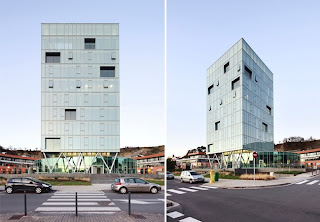This week I sped forward through the literature from early 70's to arrive at the present debate of sustainable design:What is sustainable? How do you design sustainably? ect. ect. Living in the age of "green washing", where for every product there seems to exist an alternative that is natural, organic, green, eco-friendly, many don't question the actual defining parameters of these terms
In,Taking Shape:A New Contract between Architecture and Nature, author Susannah Hagan calls for a redefinition of sustainable architecture. Hagan argues that creating a new sustainable design process based upon environmental ethic and not aesthetics will ultimately fail. She introduces three criteria which engage with environmental design and can act as tools to examine the idea of "sustainable".
1-Symbiosis: considers the building's life cycle and recognises the dynamic interrelated system of the environment
2-Differentiation: "considers whether biological diversity implies cultural diversity".
Looks to architectural diversity and what environmental advantage may be gained by pursuing it.
Looks to architectural diversity and what environmental advantage may be gained by pursuing it.
3-Visibility: "considers if all existing forms and theories are the only options”.
“The criterion of ‘visibility’ therefore asks whether this push towards conscious signification should not be included in environmental architecture. The issues of visibility pushes beyond architecture made sustainable:it marks out the ground on which some environmental architecture doubles back to architecture as art, that is to directed expression.”
Also, included in the reading in the chapter, “Rules of Engagement”, Hagan argues for a a restructuring of the BREEAM rating system, which is Britain’s equivalent to the U.S. LEED evaluating system. While the argument is a bit outdated at present, since this publication the BREEAM system has revamped their criterion for buildings achieving rated status, Hagan holds the same stance on the issue as many LEED skeptics to in the United States. Hagan contends that the rating system is superficial and undemanding and, “the most problematic aspect of the award, however, is the fact that is based on work done at design stage and not when the building is up and running”. She calls for a more holistic design and building approach:
“A symbiotic relationship is only possible if the building flights entropy like a natural system ,blurring the line between the man made and the given”.
Earlier this year, Frank Ghery defended his criticism of the LEED rating system in the U.S:
Ghery believes sustainable building concerns to be too “political” and LEED awards superficial and “bogus” in nature. While a skeptic of the LEED rating system myself, I am a proponent of sustainable design and believe there must be accountability in the design/build/operation. To call these issues political is unreasonable and "short sighted".
Good write up on Ghery:
ECT.
"Green wash" critique
Thankfully, there are still those who disagree with Ghery...
http://inhabitat.com/2010/11/16/spanish-highrise-keeps-its-cool-under-a-double-skin/#more-186992

No comments:
Post a Comment